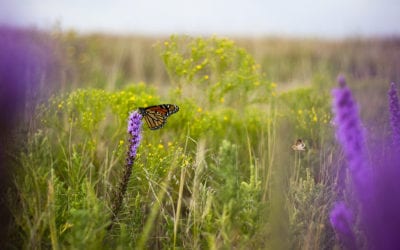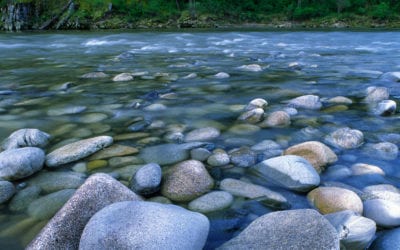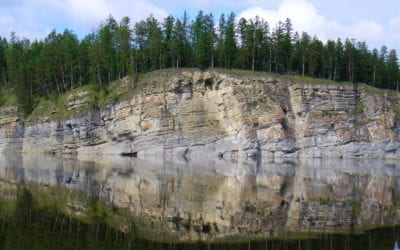View from Pebble Creek in Yellowstone National Park © Melanie Hill
Personal Restraint and Responsibility for Protected Areas in Crisis
Editorial Perspectives
April 2019 | Volume 25, Number 1
In a recent article in High Country News, former National Park Service Director Jonathan B. Jarvis strongly states that it was a mistake to keep the US National Parks open to the public during the 2018–2019 federal government shutdown. He contends that leaving the parks open without essential staff and resources was “equivalent to leaving the Smithsonian museums open without any staff to protect the priceless artifacts” (Jarvis 2019, p. 1). Unfortunately, we are only beginning to understand how true Jarvis’s assertions are. Reports of vandalism in parks such as Joshua Tree National Park and Yellowstone National Park have been widely circulated in the news and across social media. Trash and human waste have accumulated at alarming rates as visitation continued during the shutdown and human use overwhelmed facilities and park resources. Cultural and historic artifacts from important battlefield parks and cultural heritage sites were impacted by greater occurrences of theft and damage. And important scientific research efforts were interrupted or impeded by lack of resources and staffing.
During the 2013 US government shutdown, national parks were closed for use and access. The public outcry from citizens unable to enjoy and visit their public lands was a political force that spurred politicians to compromise and act. However, the latest government shutdown has created a “new outcry.” Whereas many volunteers, advocates, and outdoor enthusiasts worked to maintain the parks and access, other individuals seized an opportunity to exhibit destructive behavior. Without oversight, enforcement, or restraint, these individuals exhibited behaviors that have irreparably harmed global natural resources. Although such depreciative behaviors and acts are not novel, the stark contrast to previous restraint raises the question, “How can a society champion the public good in one instance, and yet willfully damage and undermine that same good in another?”
Admittedly, such a question appears naive and myopic. Contradictions and ironies are found across all human behavior. However, the practical question then may be why, in this instance, were visitors unable to exercise personal restraint? What changed from their previous excursions into protected areas to remove the sense of responsibility or adherence to social norms? If parks and protected areas are “our best idea,” and if we are a part of nature and need it for our existence, then why act to its detriment?
Instead of trying to answer these questions or attempting to understand the motivation for human behavior, perhaps it is better to strive for further growth and change. The public values nature, public lands, and access, but this value and understanding needs to be broadened and cultivated. Nature’s role in ecosystems services, biodiversity, and climate change resilience needs to be accepted and embraced by a greater proportion of society. We must continue to educate and communicate with others about nature’s existence values to make it a normative belief. Progress has been made, but as this most recent example demonstrates, efforts must continue if human restraint and personal responsibility toward the protection of nature are to be dominant human values.
In this issue of IJW, we explore insights from the 2018 National Wilderness Workshop. Vladimir Bocharnikov and Falk Huettmann discuss wilderness conditions as ecological indicators in Russia. David Cole documents the history and contributions of the Wilderness Management Research Unit. Finally, Helen Kopnina examines rights and ecological justice across Amazonia.
ROBERT DVORAK is editor in chief of IJW and professor in the Department of Recreation, Parks, and Leisure Services Administration at Central Michigan University: email: dvora1rg@cmich.edu.
Reference
Jarvis, J. B. 2019. It’s a mistake to keep parks open during the shutdown. High Country News. Retrieved January 4, 2019, from www.hcn.org/articles/national-park-service-keeping-national-parks-open-during-the-shutdown-is-a-terrible-mistake/.
Read Next
Wilderness Was Not America’s New Idea: Exploring a New Wilderness Stewardship Ideal at the 2018 National Wilderness Workshop
As tribes across the United States seek to regain their sovereignty and access to ancestral lands and ecosystems, we as managers can be visionary and create a management model that extends beyond a seat at the table.
Did #MakeYourSplash Make a Splash?
In 2018, we celebrated the 50th anniversary of the birth of our Wild and Scenic River System. Created in 1968 with only eight rivers, the system has grown to include more than 12,000 miles (19, 312 km) and over 200 protected rivers.
Wilderness Condition as a Status Indicator of Russian Flora and Fauna: Implications for Future Protection Initiatives
In Russia, three large federal districts in the Asian part of the country hold the majority of the remaining large areas of undisturbed contiguous flora and fauna, totaling more than 9 million square kilometers (3,474,919 sq. miles; 54.6% of Russia).



